Ducks, Geese, Swans
Most of the birds in this section are members of the order Anseriformes
which has three extant families:
- Anatidae which includes over 140 species of ducks, geese, and swans.
- Anseranatidae includes the Magpie Goose
- Anhimidae which includes the three species of Screamers
All species live an aquatic existence and have partially
to fully-webbed feet.
Another common feature is the internal shape of the bill and how
the tongue is shaped to suck in water at the tip and expel it at
the sides and rear, trapping small particles for eating.
Some of the species in this family have evolved away from this type of
feeding but still have the vestiges of this ability.
Screamers

Southern Screamer
|
|
|
Dabbling Ducks
Dabbling Ducks feed on plants in shallow water by dipping their heads in the
water or by up-ending themselves with only their tails sticking up out of the water.
Dabbling Ducks legs are situated towards the middle of their bodies which gives them the
ability to walk on land.
They also can leap into the air and are swift fliers.
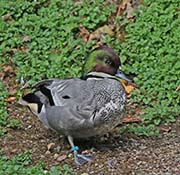
Falcated Duck
|
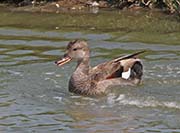
Gadwall
|

Hawaiian Duck
|

Laysan Duck
|
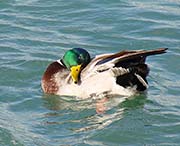
Mallard
|

Mottled Duck
|
Wigeons - Dabbling Ducks
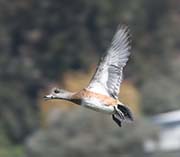
American Wigeon
|

Eurasian Wigeon
|

American-Eurasian Wigeon
|

Chiloe Wigeon
|
|
|
Pintails - Dabbling Ducks

Northern Pintail
|

White-cheeked Pintail
|
|
Teals - Dabbling Ducks

Australian Shoveler
|

Baikal Teal
|

Blue-winged Teal
|

Brazilian Teal
|

Cinnamon Teal
|
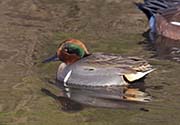
Green-winged Teal
|
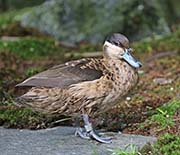
Hottentot Teal
|

Madagascar Teal
|

Puna Teal
|
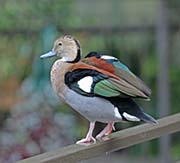
Ringed Teal
|

Sunda Teal
|
|
Shovelers - Dabbling Ducks
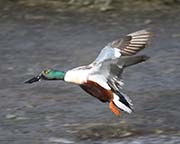
Northern Shoveler
|

Red Shoveler
|
|
Diving Ducks
Diving Ducks mostly feed by diving into the water in search of food.
Their legs are situated towards the back of their bodies which helps with
their diving but it makes taking off difficult.
Thus, some diving ducks "run" across the water to take off.
Also, their legs being so far back makes it difficult for them to walk on land.

Canvasback
|

Ferruginous Duck
|
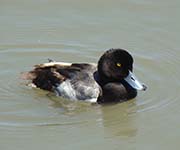
Greater Scaup
|
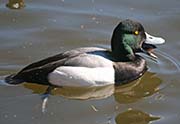
Lesser Scaup
|

Marbled Teal
|

Redhead
|
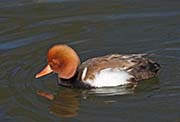
Red-crested Pochard
|

Ring-necked Duck
|

Rosy-billed Pochard
|

Tufted Duck
|

White-winged Duck
|
|
Eiders and Sea Ducks
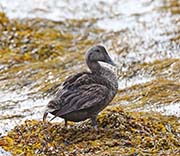
Common Eider
|

Harlequin Duck
|
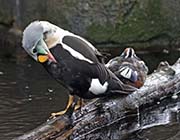
King Eider
|

Long-tailed Duck
|
|
|
Shelducks and related

African Comb Duck
|

Common Shelduck
|
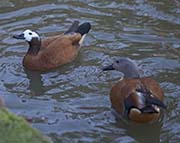
South African Shelduck
|
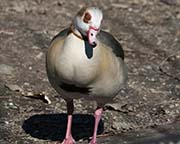
Egyptian Goose
|

Orinoco Goose
|

Paradise Shelduck
|

Pink-eared Duck
|

Radjah Shelduck
|

Ruddy Shelduck
|

Spur-winged Goose
|
|
|
Scoters
Scoters are seaducks.
In North American, they breed in the far north of and
migrate south in the winter.

Black Scoter
|
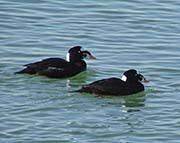
Surf Scoter
|

White-winged Scoter
|
Goldeneyes, Stifftails, Smew

Barrow's Goldeneye
|

Common Goldeneye
|

Lake Duck
|

Maccoa Duck
|
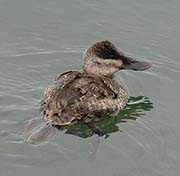
Ruddy Duck
|
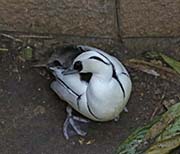
Smew
|
Bufflehead, Mergansers
Buffleheads and Mergansers are all sea ducks.
The mergansers have serrated edges to the bills which help them
grip fish.
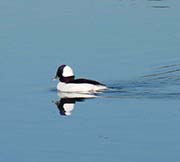
Bufflehead
|

Common Merganser
|

Hooded Merganser
|

Red-breasted Merganser
|
|
|
Perching Ducks, Whistling-Ducks

Black-bellied Whistling Duck
|

Fulvous Whistling Duck
|

Lesser Whistling Duck
|

Plumed Whistling Duck
|

White-faced Whistling Duck
|

African Pygmy-goose
|
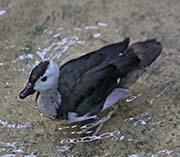
Cotton Pygmy-goose
|
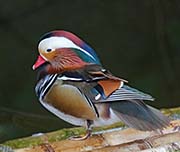
Mandarin Duck
|

White-backed Duck
|

Wood Duck
|
|
|
Geese

Ashy-headed Goose
|

Barnacle Goose
|

Bar-headed Goose
|

Brant Goose
|

Cackling Goose
|

Canada Goose
|

Cape Barren Goose
|
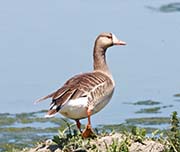
Greater White-fronted Goose
|

Magpie Goose
|
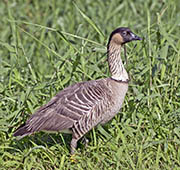
Nene
|

Red-breasted Goose
|

Ross's Goose
|

Snow Goose
|

Swan Goose
|
|
Swans

Black-necked Swan
|
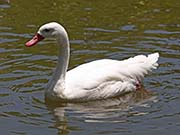
Coscoroba Swan
|

Mute Swan
|

Trumpeter Swan
|

Tundra Swan
|
|
Domestic & Feral Waterfowl

Black Swan
|
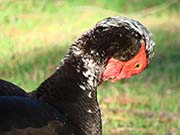
Domestic-Feral Waterfowl
|
|
Top of Page






























































































